Celtic Hair Restoration is in the heart of Dublin City Centre, which is the capital of Ireland. It is no secret that Dublin city is full of history and historical places to visit. The City of Dublin can trace its origin back more than 1,000 years, and for much of this time it has been Ireland's principal city and the cultural, educational and industrial centre of the island. While you are at the CHR Clinic, why not take a walk around Dublin City and explore the gems that this beautiful city of Dublin has to offer.
Famous for its cultural heritage and charming hospitality, Dublin lies between Howth in the north and the headland of Dalkey to the south on a wide bay. The River Liffey, which flows into the harbour, slices the city in two. Several bridges span the north-south divide, the most famous of which is O'Connell Bridge. Any of them are a lovely place to stroll and take in the essence of the capital. Pre-independence Dublin was once the second city of the British Empire, the graceful Georgian architecture and picturesque parks bearing testament to a troubled legacy. Ireland's capital has given the world such renowned literary figures as Yeats, Beckett, Joyce, Shaw, and Wilde. Dubbed a UNESCO City of Literature in 2010, Dublin's written tradition stretches back to AD 800 with The Book of Kells, now on permanent exhibition at Trinity College. Although Dublin sprawls rather than soars, the city centre is easily explored on foot, and a convenient transport network takes you wherever you wish to go. Find the best places to visit with our list of the top tourist attractions in Dublin.
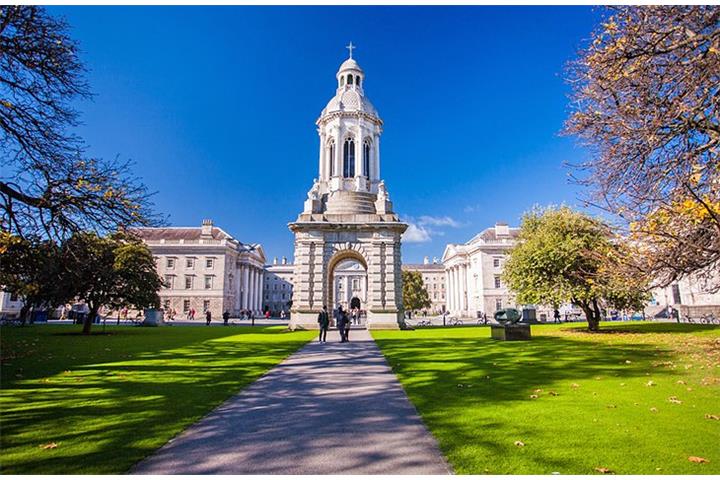
Trinity College is probably the best spot to kick off your Dublin tour. It's at the heart of the capital, packed full of incredible history, and it's the oldest university in Ireland having been founded in 1592 by Queen Elizabeth I.
Occupying an enviable 40-acre site, Trinity retains some of its ancient seclusion of cobbled squares, gardens, and parks and is famed throughout the world for its collection of great treasures. These include, on permanent exhibition, the 9th-century illuminated manuscript, the Book of Kells, the Books of Durrow and Armagh, and an ancient Irish harp. The priceless artifacts are displayed in the Treasury and the awe-inspiring 18th-century Long Room, which houses more than 200,000 of Trinity's oldest books and hosts regular literary exhibitions. Book the Early Access Book of Kells Tour to avoid the long lines. It also includes a trip to the exterior of Dublin Castle.
Trinity is a haven in an otherwise bustling area. Alumni over the centuries include such figures as Jonathan Swift (most famously known as the author of Gulliver's Travels), Oscar Wilde, Bram Stoker (author of Dracula), and playwright Samuel Beckett. Entering through a timber-tiled archway, you are instantly brought back in time. The immaculate green lawns, 18th- and 19th-century buildings, and cobbled pathway are reminiscent of a more gentile age and ooze a sense of hushed academia.
It's best to time your visit strategically, as buildings open to the public can become crowded during peak season. As well as taking in the must-see sights, do make time to relax and simply enjoy the atmosphere. Opposite the college on College Green is the old Irish Parliament building now a branch of the Bank of Ireland.
Address: Trinity College, College Green, Dublin
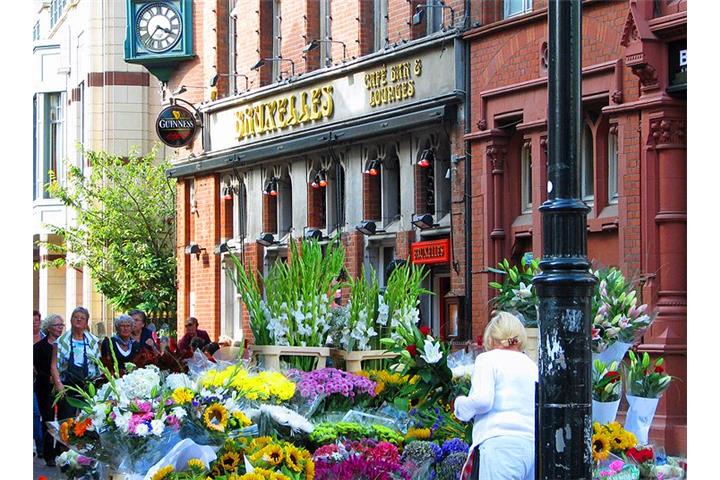
A short southerly stroll from Trinity College takes you down towards Dublin's premier shopping location, Grafton Street. A statue of Molly Malone sits at the bottom of the street, so it's impossible to miss. This eclectic stretch buzzes morning, noon, and night and is a magnet for buskers, from classical quartets to traditional fiddle players and singer-songwriters. Many famed bands and musicians have given impromptu performances here, including Bono of U2.
Aside from buskers, you will find a broad range of boutiques, jewelers, and department stores, including upmarket Brown Thomas. Many would say that the jewel in the crown is Bewley's Oriental Café, a Dublin institution at this location since 1927. If you're on a shopping spree, it's well worth taking a slight diversion to the arty Powerscourt Townhouse Centre, with its designer shops and trendy places to eat.
Bea/ photo modified
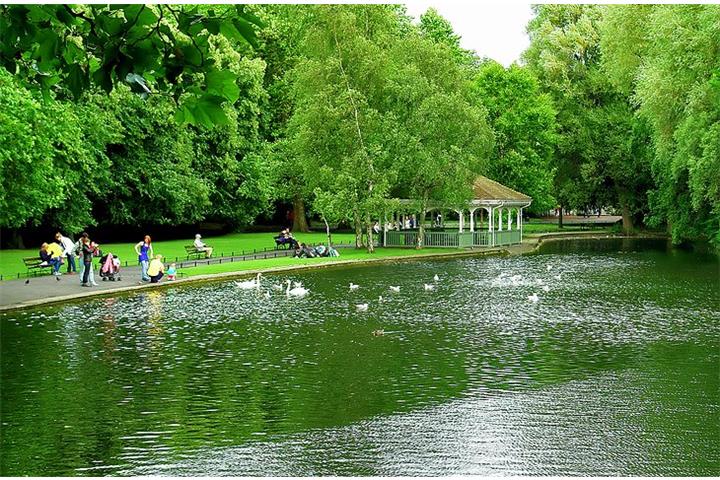
After eating your fill at Bewley's Oriental Café, an easy stroll to the top of Grafton Street brings you to Fusilier's Arch, the main entrance to St. Stephen's Green. Georgian buildings surround "the Green" (as it's known locally), although some sadly fell by the wayside during redevelopment, mainly in the 1960s, 70s, and 80s.
The 22-acre park is a Dublin treasure and an oasis of calm away from the hustle and bustle of downtown city life. When weather permits, you should do as the locals do and stretch out on the grass for some rest and relaxation, or grab a picnic lunch. Immaculate flowerbeds fringe the lawns. Also in the park is an ornate fountain at its center, a bridge over a duck pond, and a children's playground.
Incidentally, the park was the scene of bitter combat during the 1916 Uprising, however it was agreed by both sides that hostilities should cease while the park-keeper fed the ducks.
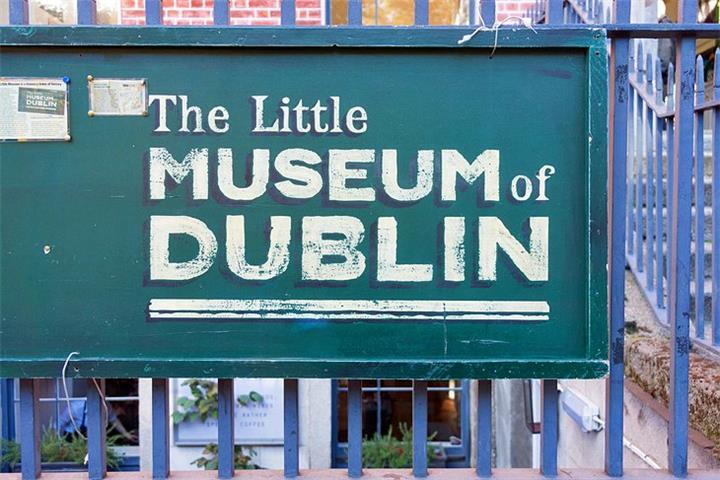
The Little Museum is a hidden gem tucked in a charming space amid all of the city's historical sights. A couple of minutes' stroll from Fusilier's Arch, at the top of Dawson Street, it is a must-see for those interested in how Dublin and its people lived their lives and evolved over the past century. James Joyce once famously said, "in the particular is contained the universal," which neatly sums up the ethos of this treasure trove. In the minutiae of people's belongings, history is indeed writ large.
Opened in 2011 following an appeal for mementos and artifacts, the museum has gone from strength to strength and now hosts an array of temporary exhibitions and events, as well as permanent installations, including a U2 retrospective with exhibits donated by band members. Other treats include the lectern used by John F. Kennedy when he addressed both houses of the Irish Parliament (Oireachtas) in June 1963.
Address: 15 St. Stephen's Green, Dublin 2 - Official site: www.littlemuseum.ie
William Murphy / photo modified
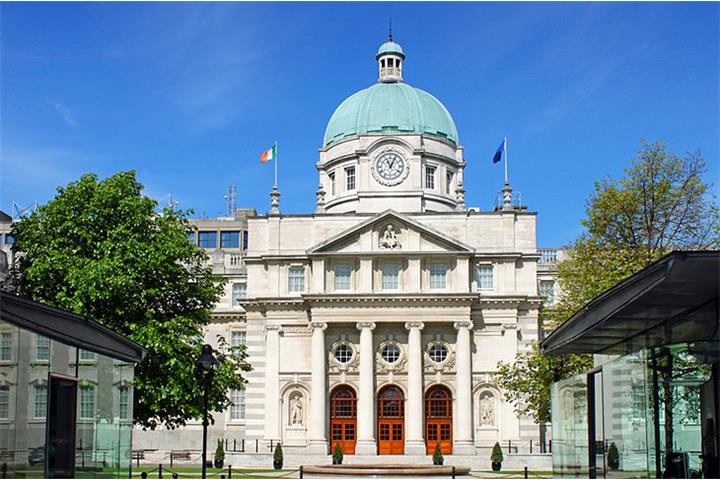
The Dail Government Building
From the Little Museum of Dublin, a saunter past the legendary hotel The Shelbourne Dublin will take you to the top of Kildare Street, home to the Irish Parliament (Dáil Éireann) on the left hand side. The parliament building was once known as Kildare House after James Fitzgerald, the Earl of Kildare, who commissioned its construction in 1745 and set out to create a grand Georgian mansion to reflect his lofty social status. When he became Duke of Leinster in 1766, the house was renamed Leinster House.
On the opposite side is a branch of the National Museum of Ireland (Archaeology), with outstanding permanent exhibitions including Ireland's Gold, Prehistoric Ireland, the Viking Collection, and the Treasury, including the magnificent Ardagh Chalice.
If you're interested in literature, you should visit the National Library close by, which has a permanent W.B. Yeats exhibition.
Address: Kildare Street, Dublin 2
Your journey to Hair Restoration starts with a No obligation Consultation whether its online or in our Clinic in Dublin, Ireland.
Our highly qualified team will guide you through the options best suited for each individual Clients hair loss needs.